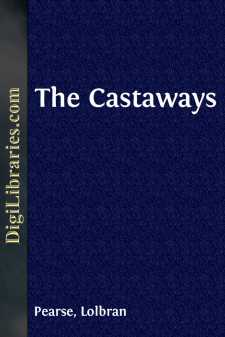Categories
- Antiques & Collectibles 13
- Architecture 36
- Art 48
- Bibles 22
- Biography & Autobiography 813
- Body, Mind & Spirit 142
- Business & Economics 28
- Children's Books 16
- Children's Fiction 13
- Computers 4
- Cooking 94
- Crafts & Hobbies 4
- Drama 346
- Education 46
- Family & Relationships 57
- Fiction 11829
- Games 19
- Gardening 17
- Health & Fitness 34
- History 1377
- House & Home 1
- Humor 147
- Juvenile Fiction 1873
- Juvenile Nonfiction 202
- Language Arts & Disciplines 88
- Law 16
- Literary Collections 686
- Literary Criticism 179
- Mathematics 13
- Medical 41
- Music 40
- Nature 179
- Non-Classifiable 1768
- Performing Arts 7
- Periodicals 1453
- Philosophy 64
- Photography 2
- Poetry 896
- Political Science 203
- Psychology 42
- Reference 154
- Religion 513
- Science 126
- Self-Help 84
- Social Science 81
- Sports & Recreation 34
- Study Aids 3
- Technology & Engineering 59
- Transportation 23
- Travel 463
- True Crime 29
The Castaways
by: Lolbran Pearse
Categories:
Description:
Excerpt
A Castaway Crew.
A boat upon the open sea—no land in sight!
It is an open boat, the size and form showing it to be the pinnace of a merchant-ship.
It is a tropical sea, with a fiery sun overhead, slowly coursing through a sky of brilliant azure.
The boat has neither sail nor mast. There are oars, but no one is using them. They lie athwart the tholes, their blades dipping in the water, with no hand upon the grasp.
And yet the boat is not empty. Seven human forms are seen within it,—six of them living, and one dead.
Of the living, four are full-grown men; three of them white, the fourth of an umber-brown, or bistre colour. One of the white men is tall, dark and bearded, with features bespeaking him either a European or an American, though their somewhat elongated shape and classic regularity would lead to a belief that he is the latter, and in all probability a native of New York. And so he is.
The features of the white man sitting nearest to him are in strange contrast to his, as is also the colour of his hair and skin. The hair is of a carroty shade, while his complexion, originally reddish, through long exposure to a tropical sun exhibits a yellowish, freckled appearance. The countenance so marked is unmistakably of Milesian type. So it should be, as its owner is an Irishman.
The third white man, of thin, lank frame, with face almost beardless, pale cadaverous cheeks, and eyes sunken in their sockets, and there rolling wildly, is one of those nondescripts who may be English, Irish, Scotch, or American. His dress betokens him to be a seaman, a common sailor.
He of the brown complexion, with flat spreading nose, high cheek-bones, oblique eyes, and straight, raven black hair, is evidently a native of the East, a Malay.
The two other living figures in the boat are those of a boy and girl. They are white. They differ but little in size, and but a year or two in age, the girl being fourteen and the boy about sixteen. There is also a resemblance in their features. They are brother and sister.
The fourth white, who lies dead in the bottom of the boat, is also dressed in seaman’s clothes, and has evidently in his lifetime been a common sailor.
It is but a short time since the breath departed from his body; and judging by the appearance of the others, it may not be long before they will all follow him into another world. How weak and emaciated they appear, as if in the last stage of starvation! The boy and girl lie along the stern-sheets, with wasted arms, embracing each other. The tall man sits on one of the benches, gazing mechanically upon the corpse at his feet; while the other three also have their eyes upon it, though with very different expressions. That upon the face of the Irishman is of sadness, as if for the loss of an old shipmate; the Malay looks on with the impassive tranquillity peculiar to his race; while in the sunken orbs of the nondescript can be detected a look that speaks of a horrible craving—the craving of cannibalism.
The scene described, and the circumstances which have led to it, call for explanation....


